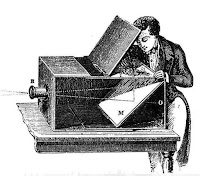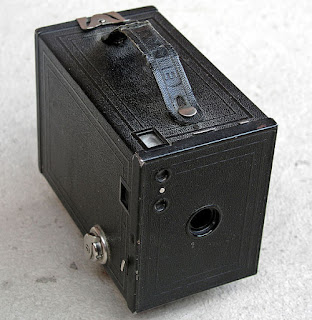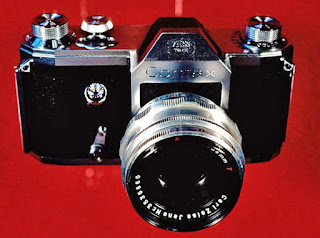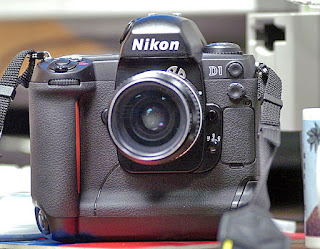This is a story about Ansel Easton Adams. possibly the best photographer ever. Ansel Easton Adams was an American photographer and an environmentalist. he is famously known for his blak and white landscape photographs of the american west, especially Yosemite national park have been widely reproduced on calenders, posters and books. with Fred Archer, Ansel Easton Adams developed the Zone system as a way to determine proper exposure and adjust the contrast of the final print. the resulting clarity and depth characterized his photographs. Ansel Easton Adams primarily used large format cameras because their high resolution helped ensure sharpness in his image.
Ansel Easton Adams founded the photography group known as group f/64 along with photographers Willard Van Dyke and Edward Weston.
Ansel Easton Adams was born in the western addition of San Francisco, California, to Charles Hitchcock and Olive Bray Adams. An only child, he was named after his uncle Ansel Easton. his mother's family came from Baltimore. The Adams family came from new England. his parental grandfather founded and built a prosperous lumbar business, which his father later ran, through his father's natural talents lay more with sciences than with business. later is life, Adams would condemn that very dame industry for cutting down many of the great redwood forests.
In 1903, his family moved 2 miles west to a new home near the seacliff neighbourhood, just south of the presido army base. the home had a splendid view of the golden gate and the marine headlands. San Francisco was devastated by the april 18, 1906 earth quake. uninjured in the initial shaking, the four year old Ansel Easton Adams was tossed face first `into a garden wall during an aftershock three hours later, breaking and scarring his nose. Among his earliest memories was watching the smoke from the ensuring fire that destroyed much of the city a few miles to the east. although a doctor recommended that his nose be reset once he reached maturity, Ansel Easton Adams's nose remained crooked his entire life.
Ansel Easton Adams was a hyperactive child and prone to frequent sickness and hypochondria. he had a few friends, but his family home and surroundings on the heights facing the golden gate provided ample childhood activities. although he had no patience for games or sports, the curious child took to the beauty of the nature at an early age, collecting bugs and exploring lobos creek and all the way to baker beach and the sea cliffs leading to lands end.
His father bought a three inch telescope and they enthusiastically shared the hobby of amateur astronomy, visiting the lick observatory on mount hamilton together. his father went on to serve as the paid secretary-treasurer of the astronomical society of the pacific from 1925 to 1950.
After the death of Ansel's grandfather and the aftermath of the panic of 1907, his father;s business suffered great financial losses, some of the induced near-poverty was because Ansel's uncle Ansel Easton and Cedric Wright's father, George Wright, had secretly sold their shares of the company to the hawaiian sugar trust for a large amount of money. by 1912, the family's standard of living dropped sharply. after young Ansel was dismissed from several private school for his restlessness adn inattentiveness, his father decided to pull him out of school in 1915, at the age of 12. Adams was then educated by private tutors, his aunt Mary, and by his father. his aunt was a follower of Robert G Ingersoll, a 19th century agnostic, abolitionist and women's suffrage advocate. as a result of his aunt's influence, Robert's teachings were important to Ansel's upbringing.
His father raised him to follow the ideas of Ralph Waldo Emerson. "to live a modest, mortal life guided by a social responsibility to man and to nature." Adams had a warm adn supportive relationship with his father, but had a distant relationship with his mother, who did not approve of his interest in photography. the day after his mother's death on 1950, Ansel had a dispute with the undertaker when choosing which casket his mother would be buried in, Ansel chose the cheapest in the room, a $260 casket that seemed the least he could purchase without doing the job himself. when the undertaker remarked, "have you no respect for the dead?" Adams replied, "one more crack like that and i will take mama elsewhere."
Adams became interested in piano at the age 12. Music became the main focus of his youth. his father sent him to a piano teacher MArie Butler, who focused on perfectionism and accuracy. after four years of studying under her guidance, adams moved on to other teachers, one being composer Henry Cowell. for the next twelve years, the piano was Adam's primary occupation and by 1920, his intended profession. although he ultimately gave up music for photography, the piano bought substance, discipline and structure to his frustrating and erratic youth. moreover the careful training and exact craft required of a musician profoundly informed his visual artistry, as well as his influential writings and teachings on photography.
Adams first visited Yosemite National Park in 1916 with his family. He wrote of his first view of the valley: "the splendor of Yosemite burst upon us and it was glorious... One wonder after another descended upon us... There was light everywhere... A new era began for me." His father gave him his first camera, a Kodak Brownie box camera, during that stay and he took his first photographs with his "usual hyperactive enthusiasm".He returned to Yosemite on his own the following year with better cameras and a tripod. In the winter, he learned basic darkroomtechnique working part-time for a San Francisco photo finisher.Adams avidly read photography magazines, attended camera club meetings, and went to photography and art exhibits. With retired geologist and amateur ornithologist Francis Holman, whom he called "Uncle Frank," he explored the High Sierra, in summer and winter, developing the stamina and skill needed to photograph at high elevation and under difficult weather conditions
In 1927, Adams produced his first portfolio, Parmelian Prints of the High Sierras, in his new style, which included his famous image Monolith, the Face of Half Dome, taken with his Korona view camera using glass plates and a dark red filter (to heighten the tonal contrasts). On that excursion, he had only one plate left and he "visualized" the effect of the blackened sky before risking the last shot. He later said "I had been able to realize a desired image: not the way the subject appeared in reality but how it felt to me and how it must appear in the finished print". In April 1927, he wrote "My photographs have now reached a stage when they are worthy of the world's critical examination. I have suddenly come upon a new style which I believe will place my work equal to anything of its kind."
With the sponsorship and promotion of Albert Bender, an arts-connected businessman, Adams's first portfolio was a success (earning nearly $3,900) and soon he received commercial assignments to photograph the wealthy patrons who bought his portfolio. Adams also came to understand how important it was that his carefully crafted photos were reproduced to best effect. At Bender's invitation, he joined the Roxburghe Club, an association devoted to fine printing and high standards in book arts. He learned much about printing techniques, inks, design, and layout which he later applied to other projects.Unfortunately, at that time most of his darkroom work was still being done in the basement of his parents' home, and he was limited by barely adequate equipment.
Romantic landscape artists Albert Bierstadt and Thomas Moranportrayed the Grand Canyon and Yosemite at the end of their reign, and were subsequently displaced by daredevil photographers Carleton Watkins, Eadweard Muybridge, and George Fiske.But it was Adams's black-and-white photographs of the West which became the foremost record of what many of the National Parks were like before tourism, and his persistent advocacy helped expand the National Park system. He used his works to promote many of the goals of the Sierra Club and of the nascent environmental movement, but always insisted that, as far as his photographs were concerned, "beauty comes first". His images are still very popular in calendars, posters, and books.
Realistic about development and the subsequent loss of habitat, Adams advocated for balanced growth, but was pained by the ravages of "progress". He stated, "We all know the tragedy of the dustbowls, the cruel unforgivable erosions of the soil, the depletion of fish or game, and the shrinking of the noble forests. And we know that such catastrophes shrivel the spirit of the people... The wilderness is pushed back, man is everywhere. Solitude, so vital to the individual man, is almost nowhere."
Adams co-founded Group f/64 with other masters like Edward Weston,Willard Van Dyke, and Imogen Cunningham. With Fred Archer, he pioneered the Zone System, a technique for translating perceived light into specific densities on negatives and paper, giving photographers better control over finished photographs. Adams also advocated the idea of visualization (which he often called "previsualization", though he later acknowledged that term to be a redundancy) whereby the final image is "seen" in the mind's eye before the photo is taken, toward the goal of achieving all together the aesthetic, intellectual, spiritual, and mechanical effects desired. He taught these and other techniques to thousands of amateur photographers through his publications and his workshops. His many books about photography, including the Morgan & Morgan Basic Photo Series (The Camera, The Negative, The Print, Natural Light Photography, and Artificial Light Photography) have become classics in the field.
In 1966 he was elected a fellow of the American Academy of Arts and Sciences. In 1980 Jimmy Carter awarded him the Presidential Medal of Freedom, the nation's highest civilian honor.
Adams's photograph The Tetons and the Snake River was one of the 115 images recorded on the Voyager Golden Record aboard the Voyager spacecraft. These images were selected to convey information about humans, plants and animals, and geological features of the Earth to a possible alien civilization.
His legacy includes helping to elevate photography to an art comparable with painting and music, and equally capable of expressing emotion and beauty. He told his students, "It is easy to take a photograph, but it is harder to make a masterpiece in photography than in any other art medium."
Adams died on April 22, 1984, in the ICU at the Community Hospital of the Monterey Peninsula in Monterey, California, at the age of 82 fromcardiovascular disease. He was survived by his wife, two children, Michael and Anne, and five grandchildren.
Publishing rights for most of Adams's photographs are now handled by the trustees of The Ansel Adams Publishing Rights Trust. An archive of Ansel Adams's work is located at the Center for Creative Photography(CCP) at the University of Arizona in Tucson. Numerous works by the artist have been sold at auction, including a mural size print of 'CLEARING WINTER STORM, YOSEMITE NATIONAL PARK' which sold at Sotheby's New York in 2010 for $722,500, the highest price ever paid for an original Ansel Adams photograph.
John Szarkowski states in the introduction to Ansel Adams: Classic Images (1985, p. 5), "The love that Americans poured out for the work and person of Ansel Adams during his old age, and that they have continued to express with undiminished enthusiasm since his death, is an extraordinary phenomenon, perhaps even unparalleled in our country's response to a visual artist."
Source: Wikipedia











